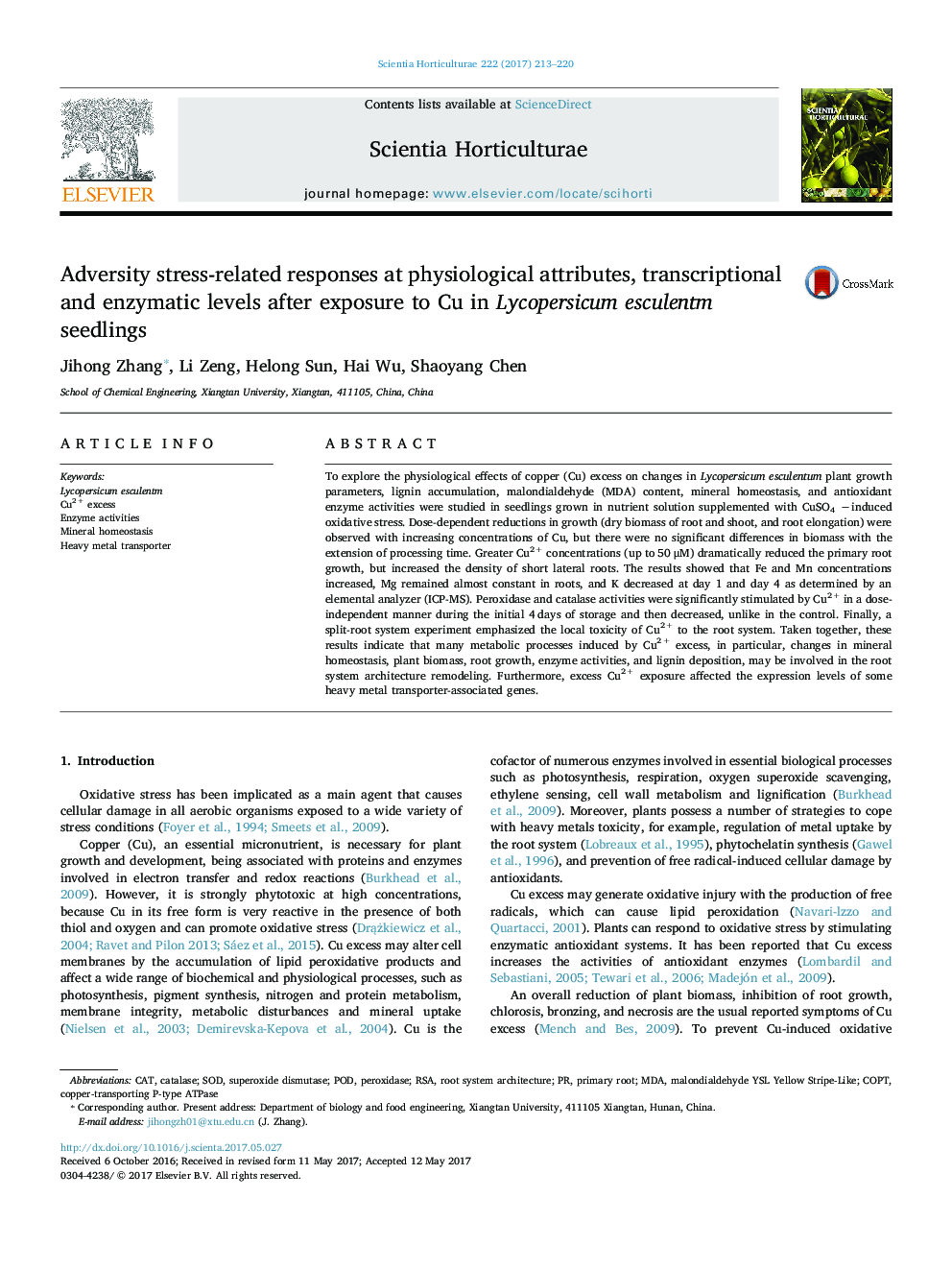| Article ID | Journal | Published Year | Pages | File Type |
|---|---|---|---|---|
| 5769514 | Scientia Horticulturae | 2017 | 8 Pages |
Abstract
To explore the physiological effects of copper (Cu) excess on changes in Lycopersicum esculentum plant growth parameters, lignin accumulation, malondialdehyde (MDA) content, mineral homeostasis, and antioxidant enzyme activities were studied in seedlings grown in nutrient solution supplemented with CuSO4 âinduced oxidative stress. Dose-dependent reductions in growth (dry biomass of root and shoot, and root elongation) were observed with increasing concentrations of Cu, but there were no significant differences in biomass with the extension of processing time. Greater Cu2+ concentrations (up to 50 μM) dramatically reduced the primary root growth, but increased the density of short lateral roots. The results showed that Fe and Mn concentrations increased, Mg remained almost constant in roots, and K decreased at day 1 and day 4 as determined by an elemental analyzer (ICP-MS). Peroxidase and catalase activities were significantly stimulated by Cu2+ in a dose-independent manner during the initial 4 days of storage and then decreased, unlike in the control. Finally, a split-root system experiment emphasized the local toxicity of Cu2+ to the root system. Taken together, these results indicate that many metabolic processes induced by Cu2+ excess, in particular, changes in mineral homeostasis, plant biomass, root growth, enzyme activities, and lignin deposition, may be involved in the root system architecture remodeling. Furthermore, excess Cu2+ exposure affected the expression levels of some heavy metal transporter-associated genes.
Keywords
Related Topics
Life Sciences
Agricultural and Biological Sciences
Horticulture
Authors
Jihong Zhang, Li Zeng, Helong Sun, Hai Wu, Shaoyang Chen,
